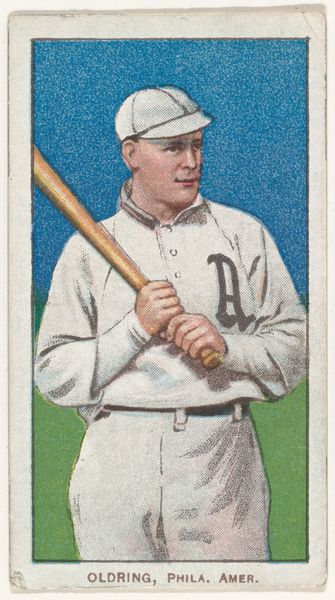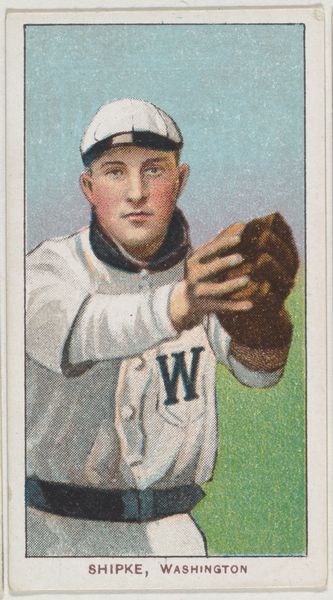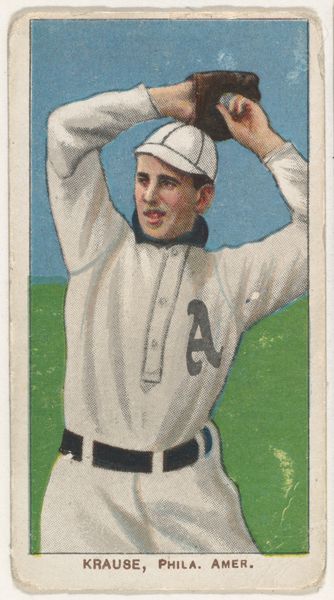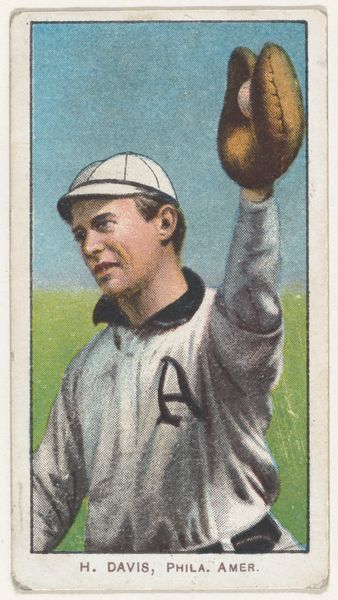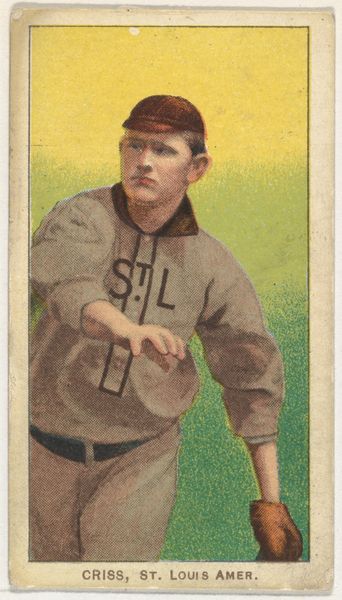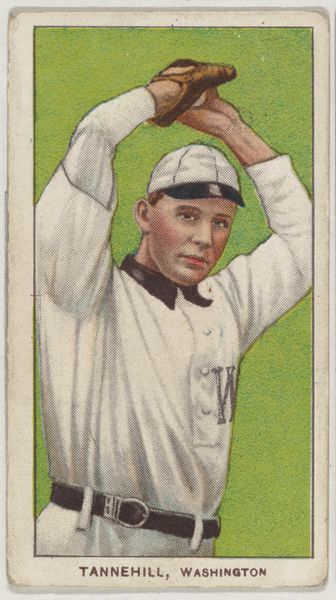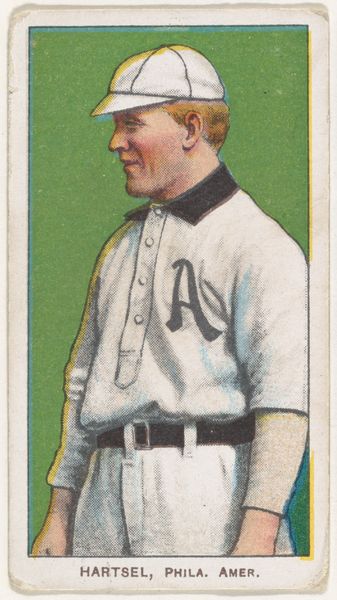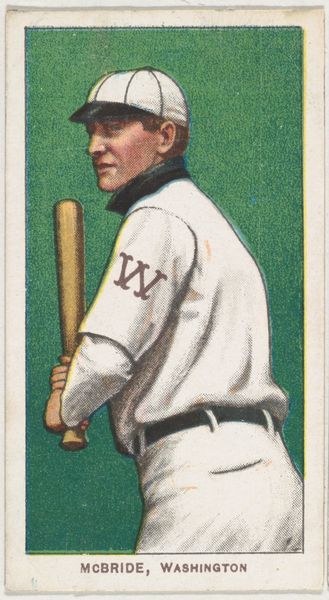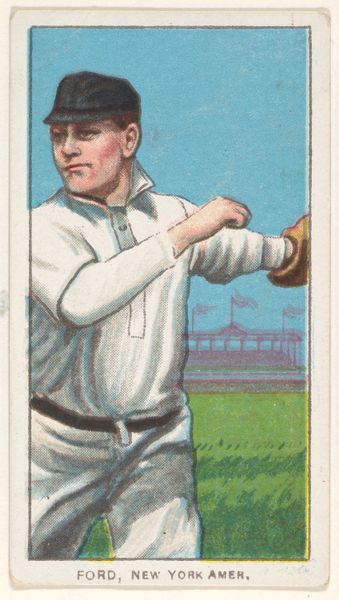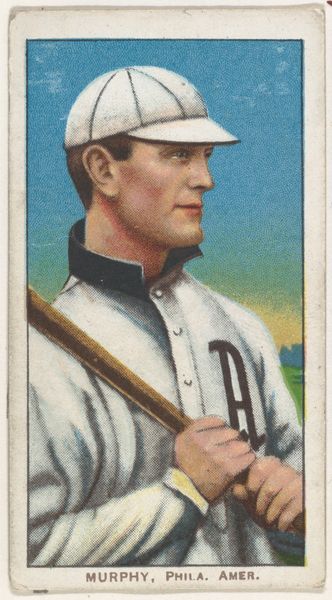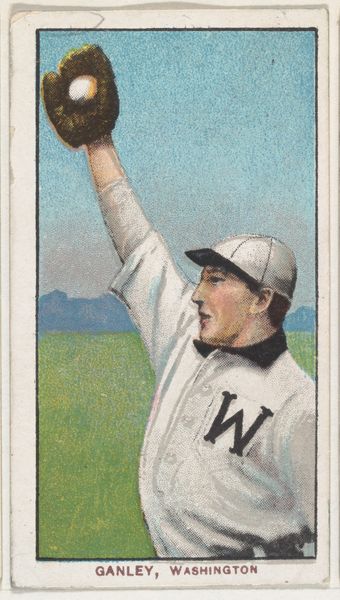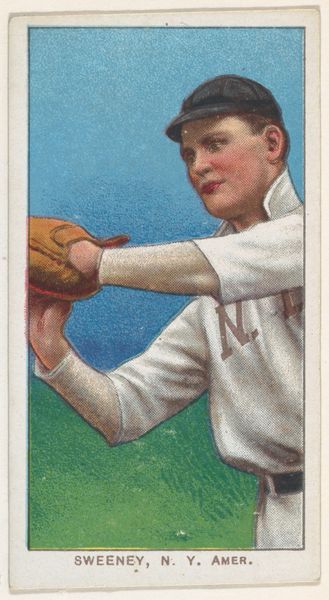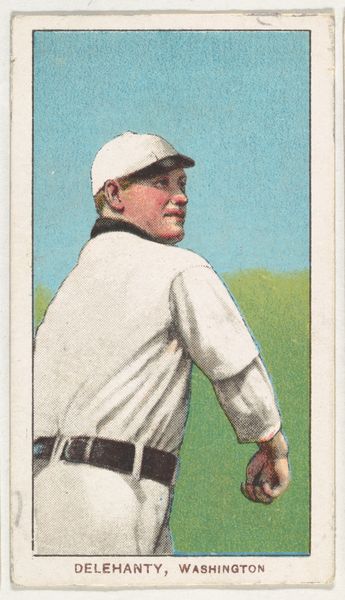
Livingstone, Philadelphia, American League, from the White Border series (T206) for the American Tobacco Company 1909 - 1911
0:00
0:00
Dimensions: Sheet: 2 5/8 x 1 7/16 in. (6.7 x 3.7 cm)
Copyright: Public Domain
Curator: At first glance, it's a baseball card; a clean, classic design with a hint of early 20th-century charm. Editor: This card, "Livingstone, Philadelphia, American League," belongs to the White Border series (T206) produced by the American Tobacco Company between 1909 and 1911. What’s compelling is how a small piece of tobacco packaging inserts itself into broader cultural narratives, reflecting social values and marketing strategies of the era. Curator: Right, these cards weren’t just about baseball; they were tools for promoting tobacco. They represent the hyper-commercialization that was happening at the turn of the century and into the early 1900s. And I see a hint of Ukiyo-e in the design, possibly influencing the artist's approach to portraying Livingstone. The composition is really striking for its simplicity, very flat planes of color. Editor: Exactly. The players almost become brands themselves. Look at the caricature-like representation, for instance. These visual representations contributed to constructing idealized, and sometimes problematic, images of athletes in American society. How were masculinity and athleticism being shaped through these distributed images? And the whiteness too... We have to think about issues of race and representation here as well. Who got to be celebrated, and whose stories were omitted? Curator: It’s fascinating how these cards become miniature historical documents, reflecting not only baseball but also broader power structures and biases of the period. Consider the accessibility. Everyone could buy tobacco, which distributed these portraits across demographics, contributing to the American cultural image. Editor: And this piece is now at the Met! I'm glad it's taken on a life beyond its initial consumerist purpose. We now see it as both art and artifact. Curator: Absolutely, by reconsidering the public role of such collectibles, we shed new light on the politics of imagery in shaping collective identity during the period. Editor: Looking at the Livingstone card encourages us to challenge how identity and power dynamics are encoded in the art that permeates our everyday lives. It calls for awareness about the social narratives surrounding us. Curator: Agreed. What started as tobacco advertising becomes an entryway to understanding critical conversations about cultural identity.
Comments
No comments
Be the first to comment and join the conversation on the ultimate creative platform.
